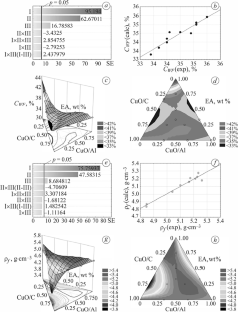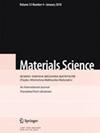不同成分自屏蔽药芯焊丝的填充因子和电荷密度预测
IF 0.7
4区 材料科学
Q4 MATERIALS SCIENCE, MULTIDISCIPLINARY
引用次数: 0
摘要
在药芯焊丝中使用放热添加剂(EA)作为电荷是改善焊接接头技术特性的一种可行方法。我们建立了数学模型来确定电荷密度和填充因子,它们取决于 EA 含量、石墨与 EA 氧化剂的比例 (CuO/C) 以及 EA 成分中氧化剂与铝粉的比例 (CuO/Al)。所研究的熔融模式主要取决于这些参数:EA = 26-28 质量%,CuO/C = 4.0-4.5 和 CuO/Al = 4.50-5.25。本文章由计算机程序翻译,如有差异,请以英文原文为准。

Prediction of Fill Factor and Charge Density of Self-Shielding Flux-Cored Wire with Variable Composition
The use of exothermic addition (EA) for charge in flux-cored wire is a promising way to improve technological characteristics of welded joints. The mathematical models to determine the charge density and the fill factor, which depend on the EA content, the ratio of graphite to EA oxidizer (CuO/C) and the ratio of the oxidizer to the aluminum powder in the composition of the EA (CuO/Al) were built. The investigated fusion modes depend mostly on such parameters: EA = 26–28 mass%, CuO/C = 4.0–4.5 and CuO/Al = 4.50–5.25.
求助全文
通过发布文献求助,成功后即可免费获取论文全文。
去求助
来源期刊

Materials Science
工程技术-材料科学:综合
CiteScore
1.60
自引率
44.40%
发文量
63
审稿时长
4-8 weeks
期刊介绍:
Materials Science reports on current research into such problems as cracking, fatigue and fracture, especially in active environments as well as corrosion and anticorrosion protection of structural metallic and polymer materials, and the development of new materials.
 求助内容:
求助内容: 应助结果提醒方式:
应助结果提醒方式:


